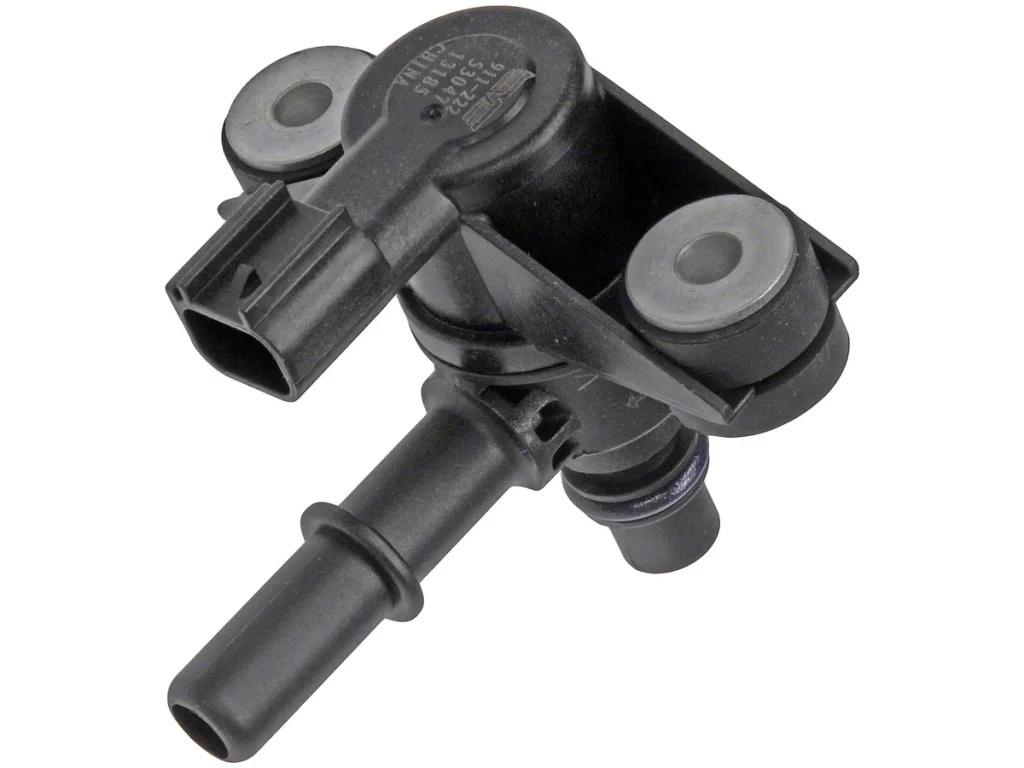You did it! You tackled that faulty purge valve and emerged victorious. Your engine purrs with newfound contentment, the check engine light has dimmed its accusatory glare, and you’re ready to hit the open road. But wait, is there anything else you need to do now that you’ve replaced the purge valve?
While the immediate threat is neutralized, understanding the nuances of your car’s evaporative emission control system and knowing what to watch for post-replacement can save you from future headaches (and costly repairs). This comprehensive guide delves deep into the world of purge valves, equipping you with the knowledge to ensure your car continues running smoothly.
Symptoms of a Failing Purge Valve
Before we dive into the post-replacement care, let’s rewind a bit. How did you know your purge valve needed replacing in the first place? Recognizing the symptoms of a failing purge valve is crucial for early detection and can prevent more serious issues down the line.
1. The Dreaded Check Engine Light

Ah, the check engine light – a beacon of automotive anxiety. While this ominous glow can signal a myriad of issues, a faulty purge valve is a common culprit. Your car’s onboard computer, the Engine Control Unit (ECU), constantly monitors various systems. When the purge valve malfunctions, it disrupts the carefully calibrated air-fuel mixture, triggering the check engine light.
2. When Your Engine Develops a Stutter
A failing purge valve can manifest in various engine performance hiccups. You might experience:
- Rough idling: Imagine your engine at a stoplight, vibrating more than a phone on silent mode. That’s rough idling, often caused by an imbalanced air-fuel mixture, a direct consequence of a malfunctioning purge valve.
- Hesitation or stumbling during acceleration: You step on the gas pedal, expecting a surge of power, but instead, your car stumbles, hesitates, or feels sluggish. This lack of responsiveness can be directly attributed to a faulty purge valve disrupting the smooth flow of the air-fuel mixture.
- Decreased fuel efficiency: Are you making more frequent trips to the gas station? A failing purge valve can disrupt the fuel system’s delicate balance, leading to reduced fuel economy.
3. The Case of the Stubborn Start
Have you ever experienced the frustration of turning the key in the ignition only to be met with stubborn resistance, especially after refueling? This frustrating scenario, known as hard starting, can be a telltale sign of a failing purge valve.
4. A Fuel Tank Feeling the Pressure
While less common, a failing purge valve can lead to a vacuum buildup in your fuel tank. This can manifest as:
- Difficulty pumping gas: You pull up to the pump, ready to refuel, but the nozzle keeps clicking off prematurely. This frustrating experience can be a sign of a vacuum issue in your fuel tank, potentially linked to a faulty purge valve.
- A hissing sound when opening the gas cap: Ever been startled by a hissing sound emanating from your gas tank when you unscrew the cap? This unusual occurrence can indicate a pressure imbalance, often caused by a malfunctioning purge valve.
Understanding the Importance of the Purge Valve
The purge valve might seem like a small, insignificant component, but it plays a vital role in your car’s overall performance and environmental impact.
A Guardian of Clean Air
Your car’s evaporative emission control (EVAP) system is like a dedicated clean-up crew for fuel vapors. These vapors, a byproduct of gasoline, are harmful to the environment and contribute to smog. The EVAP system captures these vapors and sends them to the engine to be burned during combustion.
The purge valve acts as the gatekeeper of this system, regulating the flow of fuel vapors from the charcoal canister (where they are stored) to the engine. A properly functioning purge valve ensures these vapors are safely and efficiently burned, reducing your car’s emissions.
A Balancing Act for Optimal Performance
Beyond its environmental role, the purge valve also contributes to your engine’s smooth operation. By precisely controlling the flow of fuel vapors into the intake manifold, the purge valve helps maintain the optimal air-fuel mixture. This balance is crucial for:
- Efficient combustion: A well-balanced air-fuel mixture ensures complete and efficient combustion, maximizing your engine’s power and fuel economy.
- Reduced emissions: By preventing fuel vapors from escaping into the atmosphere, the purge valve contributes to cleaner air and a healthier environment.
The Price of Clean Air

While replacing a purge valve is a relatively minor repair compared to other automotive woes, it’s essential to understand the costs involved.
1. The Labor Factor
The labor cost for replacing a purge valve can vary depending on several factors:
- Your location: Labor rates for automotive repair shops tend to be higher in urban areas compared to rural locations.
- Shop type: Dealerships often charge higher labor rates than independent mechanics.
- Vehicle make and model: Accessing and replacing the purge valve in some vehicles might be more complex, requiring additional labor time.
On average, you can expect to pay between $50 to $150 for labor.
2. The Part Itself
The cost of the purge valve itself is relatively inexpensive, typically ranging from $20 to $80, depending on the make and model of your vehicle.
3. Don’t Forget the Diagnosis
Before replacing any part, a mechanic will typically run a diagnostic test to pinpoint the issue. This diagnostic test can cost between $50 to $100.
Conclusion
Replacing your car’s purge valve is more than just a repair; it’s an investment in your car’s health, the environment, and your peace of mind. By understanding the symptoms of a failing purge valve, recognizing its importance, and following the post-replacement care tips outlined in this guide, you can ensure your car continues to run smoothly and efficiently for miles to come.
Remember, knowledge is power. Arm yourself with information, be proactive in maintaining your vehicle, and don’t hesitate to seek professional help when needed. Your car will thank you for it.
ALSO READ: What Can You Do with a Degree in Biblical Studies?
FAQs
Technically, yes, you can drive with a bad purge valve for a short period. However, it’s not recommended. Driving with a faulty purge valve can negatively impact your engine’s performance, fuel economy, and emissions. Additionally, ignoring a failing purge valve can lead to more serious issues down the line, potentially resulting in costlier repairs.
The lifespan of a purge valve can vary depending on several factors, including driving conditions, fuel quality, and overall vehicle maintenance. On average, a purge valve can last anywhere from 75,000 to 100,000 miles. However, it’s not uncommon for them to fail earlier or later.
Yes, a loose, damaged, or missing gas cap can cause similar symptoms to a bad purge valve, such as a check engine light and a hissing sound from the fuel tank. This is because the gas cap plays a crucial role in maintaining the pressure within the EVAP system.
While some car owners attempt to clean a purge valve, it’s generally not recommended. Purge valves are relatively inexpensive, and cleaning them might not effectively resolve the issue. Replacing the valve ensures optimal performance and prevents future problems.
It’s a good practice to have your EVAP system, including the purge valve, inspected by a qualified mechanic during your regular vehicle maintenance checks. This proactive approach can help identify potential issues early on and prevent more serious problems down the line.




